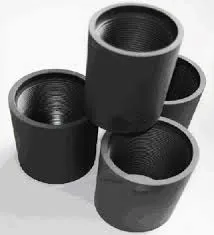- Afrikaans
- Albanian
- Amharic
- Arabic
- Armenian
- Azerbaijani
- Basque
- Belarusian
- Bengali
- Bosnian
- Bulgarian
- Catalan
- Cebuano
- Corsican
- Croatian
- Czech
- Danish
- Dutch
- English
- Esperanto
- Estonian
- Finnish
- French
- Frisian
- Galician
- Georgian
- German
- Greek
- Gujarati
- Haitian Creole
- hausa
- hawaiian
- Hebrew
- Hindi
- Miao
- Hungarian
- Icelandic
- igbo
- Indonesian
- irish
- Italian
- Japanese
- Javanese
- Kannada
- kazakh
- Khmer
- Rwandese
- Korean
- Kurdish
- Kyrgyz
- Lao
- Latin
- Latvian
- Lithuanian
- Luxembourgish
- Macedonian
- Malgashi
- Malay
- Malayalam
- Maltese
- Maori
- Marathi
- Mongolian
- Myanmar
- Nepali
- Norwegian
- Norwegian
- Occitan
- Pashto
- Persian
- Polish
- Portuguese
- Punjabi
- Romanian
- Russian
- Samoan
- Scottish Gaelic
- Serbian
- Sesotho
- Shona
- Sindhi
- Sinhala
- Slovak
- Slovenian
- Somali
- Spanish
- Sundanese
- Swahili
- Swedish
- Tagalog
- Tajik
- Tamil
- Tatar
- Telugu
- Thai
- Turkish
- Turkmen
- Ukrainian
- Urdu
- Uighur
- Uzbek
- Vietnamese
- Welsh
- Bantu
- Yiddish
- Yoruba
- Zulu
Understanding the Function and Types of Pup Joint Tubing in Oil and Gas Industries
Understanding Pup Joint Tubing A Vital Component in Well Operations
Pup joint tubing is an essential component in the oil and gas industry, particularly in the context of well construction and maintenance. It plays a crucial role in connecting other tubular goods and can significantly affect the efficiency and safety of drilling and production operations. Understanding pup joint tubing is key for engineers, operators, and anyone involved in the energy sector.
What is Pup Joint Tubing?
Pup joint tubing is a short length of pipe, typically ranging from 2 to 10 feet long, that is used to adjust the length of a tubular string. This modification is often necessary to accommodate specific well conditions or to replace damaged sections of tubing. The term pup stems from its short and often diminutive nature compared to standard tubing lengths.
These joints are made from the same materials and are manufactured under similar quality control standards as regular tubing. They can be produced in various sizes and pressure ratings, ensuring compatibility with different well designs and operational requirements.
Applications of Pup Joint Tubing
Pup joints are commonly employed in several key applications throughout the lifecycle of a well
1. Adjustment in Well Depth As drilling progresses, the depth of the well may change. Pup joints allow for precise adjustments, ensuring that the entire tubular string fits correctly into the wellbore.
2. Repair and Maintenance In cases where a section of tubing becomes damaged or corroded, pup joints can be used to replace the affected area without having to replace the entire string of tubing. This practice not only saves time but also reduces costs associated with well maintenance.
pup joint tubing

3. Connecting Diverse Tubular Components Pup joints serve as connectors between different sizes or types of tubing. They provide flexibility in system design and allow for the integration of specialized equipment or sensors.
4. Flowline Systems In production wells, pup joints can be used in flowline systems to optimize flow characteristics, reducing pressure loss and improving overall efficiency.
Importance of Proper Selection and Installation
The successful application of pup joint tubing relies heavily on the correct selection and installation. Factors such as pressure ratings, material compatibility, and environmental conditions must be considered when choosing pup joints. Moreover, proper installation techniques are vital to ensure structural integrity and operational safety. Failures or leaks in the tubing can lead to costly downtime or even hazardous situations.
Challenges in the Use of Pup Joint Tubing
While pup joints are invaluable, their use is not without challenges. The need for high-quality materials and rigorous manufacturing standards can lead to increased costs. Furthermore, if not properly maintained or inspected, pup joints can unexpectedly fail, leading to significant operational disruptions. Regular inspection and maintenance protocols are essential to ensure the longevity and reliability of these components.
Conclusion
Pup joint tubing stands as a testament to the ingenuity and adaptability required in the oil and gas industry. Its ability to facilitate custom solutions in well operations makes it an indispensable tool for engineers and operators alike. As technology continues to evolve, understanding the role of pup joint tubing will remain critical in optimizing well performance and ensuring safety throughout the drilling and production processes. Ultimately, effective use of pup joints can contribute to more efficient operations, enhancing the overall productivity of oil and gas extraction.
-
Tubing Pup Joints: Essential Components for Oil and Gas OperationsNewsJul.10,2025
-
Pup Joints: Essential Components for Reliable Drilling OperationsNewsJul.10,2025
-
Pipe Couplings: Connecting Your World EfficientlyNewsJul.10,2025
-
Mastering Oilfield Operations with Quality Tubing and CasingNewsJul.10,2025
-
High-Quality Casing Couplings for Every NeedNewsJul.10,2025
-
Boost Your Drilling Efficiency with Premium Crossover Tools & Seating NipplesNewsJul.10,2025







